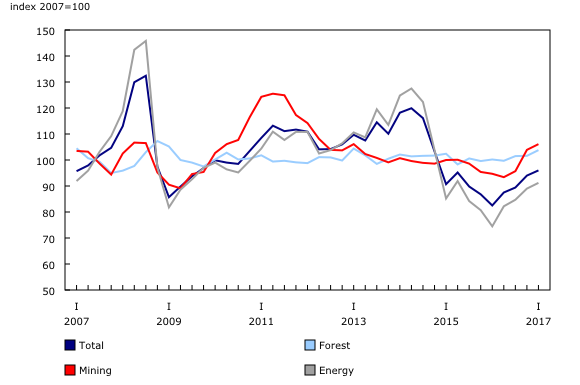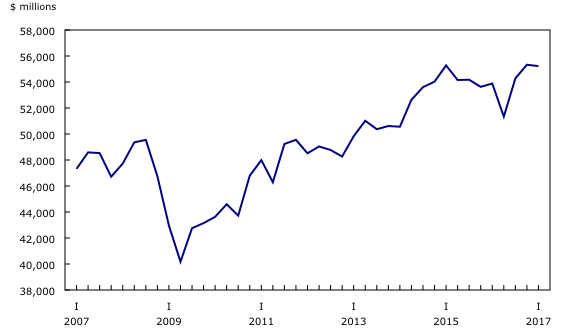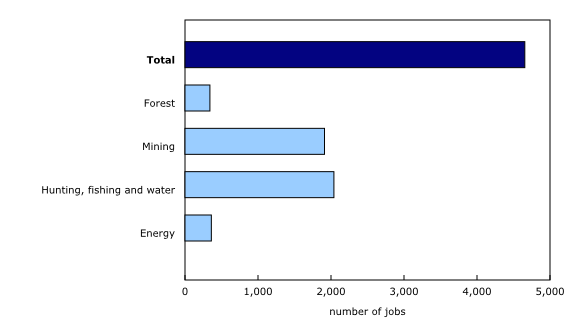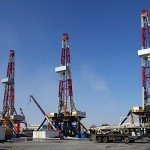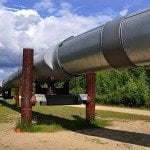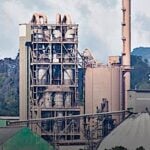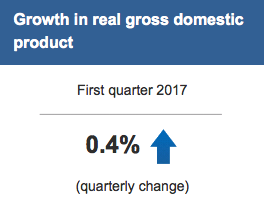 Real natural resource gross domestic product (GDP), or the volume of economic activity attributable to natural resources, increased by 0.4% in the first quarter after edging up 0.2% in the fourth quarter. In comparison, GDP for the total economy grew 0.9%.
Real natural resource gross domestic product (GDP), or the volume of economic activity attributable to natural resources, increased by 0.4% in the first quarter after edging up 0.2% in the fourth quarter. In comparison, GDP for the total economy grew 0.9%.
Energy, the largest subsector, was the main contributor to the growth for the quarter (+0.7%). The mineral and mining subsector grew 0.4%, while the forest (-1.0%) and hunting, fishing and water (-2.6%) subsectors declined.
Natural resource activity totalled $213 billion (nominal terms, at annual rates) in the first quarter, accounting for 10.8% of Canada’s GDP. This proportion remains below the most recent peak of 14.5% recorded in the second quarter of 2014.
Natural resource prices continue to rise
Natural resource prices increased 2.1% in the first quarter on the strength of the energy (+2.4%) and forest (+2.3%) subsectors. Prices in the mineral and mining subsector (+2.1%) also rose in the quarter. Natural resource prices increased 16.4% in the first quarter compared with the same quarter a year earlier.
Exports down in the first quarter
Real natural resource exports declined 0.2% in the first quarter after increasing in the last two quarters of 2016. Declines were observed in the mining subsector (-3.9%), led by coal exports (-19.2%), which were affected by harsher weather conditions and lower demand due to recent price volatility. The declines were partly offset by increases in the energy subsector (+2.0%), led primarily by refined petroleum products (+21.7%) as some operations resumed after scheduled maintenance in the fourth quarter.
Real natural resource imports rose by 2.2% in the first quarter, on the strength of mining (+3.9%) and energy (+1.3%) products. This resulted from the aggregate effects of a 26% increase in crude oil imports and a 22% decline in refined petroleum products imports.
The natural resource sector adds jobs in the first quarter
Employment in the natural resource sector increased 0.8% (+4,650 jobs) in the first quarter. Growth was led by the energy subsector (+0.8%), which added 2,000 jobs to the economy. Within the subsector, employment in the services (+1.2%) and primary manufacturing (+1.7%) industries increased. There were also notable gains in the mining subsector (+1,900 jobs).
Downstream activities continue to add to GDP
Secondary and tertiary processing for the forest and mineral and mining subsectors are identified in the natural resource indicators for analytical purposes.
Real GDP from downstream activities rose 4.2% in the first quarter on the strength of mineral and mining products. An additional 1.6% of Canadian GDP was attributable to these downstream activities.
The natural resources sector including these downstream activities represented 12.4% of GDP in the first quarter.

